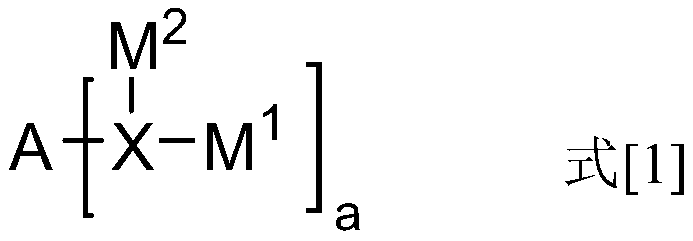Organic electroluminescent device and display device
An electroluminescent device and luminescent technology, which is applied in the direction of electric solid-state devices, electrical components, semiconductor devices, etc., can solve problems such as poor color purity, low device efficiency, and efficiency roll-off, and achieve the suppression of DET energy transfer, device The effect of improving efficiency and stability and reducing efficiency roll-off
- Summary
- Abstract
- Description
- Claims
- Application Information
AI Technical Summary
Problems solved by technology
Method used
Image
Examples
preparation example Construction
[0037] Considering that the preparation of the light-emitting layer at this stage mostly adopts evaporation contact technology, such as multi-source co-evaporation, so in this embodiment, the resonant TADF material with a molecular weight of 200-2000 is preferred to avoid resulting in difficulty in vapor deposition.
[0038] As a way to control the molecular weight of the resonant TADF material, a can be limited to an integer of 1 to 6, that is, the resonant TADF material of this embodiment can include 1 to 6 1 , M 2 unit.
[0039] In this embodiment, as the resonance type TADF material of the dye, in particular, at least one of the compounds F-1 to F-29 with the following general formulas can be selected to improve the luminous efficiency of the organic electroluminescent device and reduce the efficiency roll-off:
[0040]
[0041]
[0042] Wherein, R is independently selected from hydrogen, halogen, cyano, C 1 ~C 10 Alkyl, C 2 ~C 6 Alkenyl, C 1 ~C 6 Alkoxy or t...
Embodiment 1-9
[0080] Embodiments 1-9 respectively provide an organic electroluminescent device, and the device structure is ITO / NPB (40nm) / TCTA (10nm) / double light-emitting layer / TPBI (30nm) / LiF (1nm) / Al (100nm), However, the materials and thicknesses of the double light-emitting layers are different. The material composition of the specific double light-emitting layer is shown in Table 1.
[0081] Table 1
[0082]
[0083]
[0084] The organic electroluminescent device in the above-mentioned embodiment is measured as follows: Under the same brightness, use Keithley K 2400 digital source meter and PR 655 spectral scanning luminance meter to measure the turn-on voltage and current efficiency of the organic electroluminescent device, and then calculate The external quantum efficiency of the device under different brightness, the half-maximum width FWHM is 1000cd / m 2 Next measure. Among them, when the voltage is increased at a rate of 0.1V per second, when the brightness of the organi...
Embodiment 5
[0104] It can be seen that, adopting the technical scheme of double light-emitting layers in this embodiment, using bulk exciplexes and interfacial complexes as host materials, using TADF materials as sensitizers, and using resonant TADF materials as dyes, can significantly Improve the external quantum efficiency of the device and improve the performance of the device.
PUM
 Login to View More
Login to View More Abstract
Description
Claims
Application Information
 Login to View More
Login to View More - R&D
- Intellectual Property
- Life Sciences
- Materials
- Tech Scout
- Unparalleled Data Quality
- Higher Quality Content
- 60% Fewer Hallucinations
Browse by: Latest US Patents, China's latest patents, Technical Efficacy Thesaurus, Application Domain, Technology Topic, Popular Technical Reports.
© 2025 PatSnap. All rights reserved.Legal|Privacy policy|Modern Slavery Act Transparency Statement|Sitemap|About US| Contact US: help@patsnap.com



